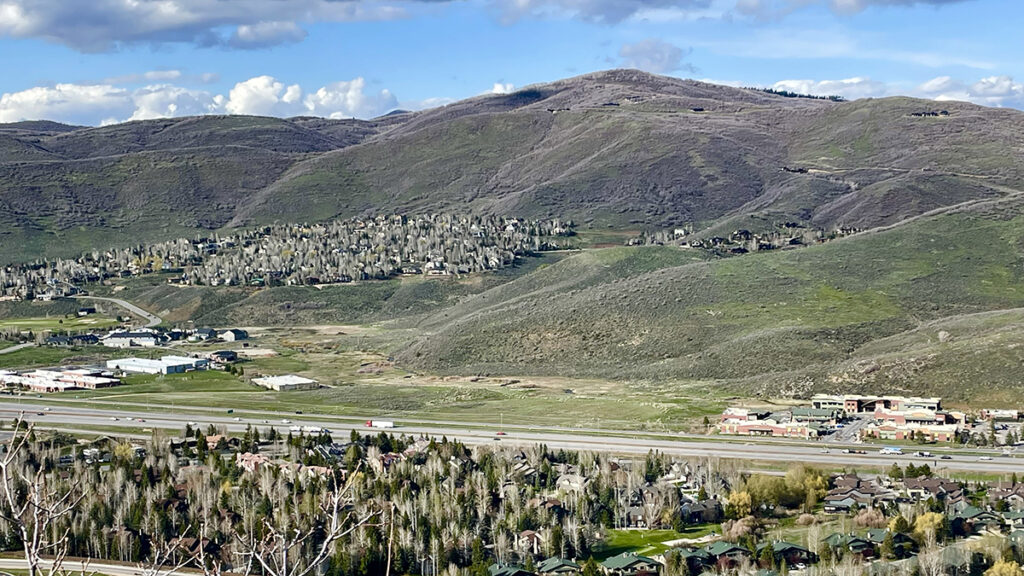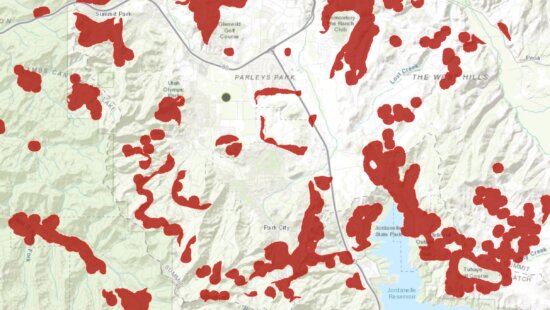Editor’s Picks
‘If we do this right, the state won’t step in’: Council debates housing strategy amid growing oversight

The Summit County courthouse and government offices in Coalville. Photo: Summit County
SUMMIT COUNTY, Utah – A Summit County Council discussion on housing policy last week exposed deep divisions over how the county should manage growth and affordability — and raised fresh questions about whether officials are moving too fast without a clear strategy.
Councilmember Roger Armstrong, long a skeptic of what he sees as piecemeal housing policy, delivered a sweeping critique of the county’s recent decisions, calling its current direction “the least organized approach” he’s ever seen.
“We just keep blundering ahead with housing,” Armstrong said during a lengthy exchange with staff and colleagues. “We’re insisting we need more — creating housing overlays — when there’s stuff happening on the ground today we’re not taking into account.”
Armstrong said the county is moving too quickly to establish tools such as overlay zones and new density programs without first agreeing on what kind of housing it wants or where it belongs. He questioned why the newly formed Summit County Housing Authority was preparing a strategic plan before the council had finalized its own housing goals.

“It’s as backward as anything I’ve seen,” he said. “We need to sit down and wrestle with the hardest questions — how to build 200 units in the next few years, not talk in the abstract about 7,000 new people or 10,000 new homes. We should have a vision, and it should be specific.”
Armstrong’s remarks touched a nerve in a wide-ranging conversation that stretched from zoning reform to redevelopment. He urged the county to focus on underused commercial parcels — particularly near schools and transit hubs — instead of opening more undeveloped land for housing. “We haven’t even had the concept discussion about scraping and rebuilding where infrastructure already exists,” he said. “We’re just scouring the county to put more housing wherever we can.”
County Manager Shayne Scott responded, acknowledging Armstrong’s concerns but noting the council had already set a housing goal — 1,500 units over 10 years — and that staff were working to translate those directives into a practical plan. “What we’re looking for today is feedback,” Scott said. “We’ve tried to respond to what council has directed. If the council wants to change that, because the Housing Authority is acting in under the direction and the vision and the guide of the council, they will do something different. And if you don’t want to do any housing, please let us know so we can start doing other things,” Scott said.
Housing Director Jeff Jones added that while the process may appear disjointed, his team is trying to align multiple moving parts — from the county’s development code overhaul to the state-mandated moderate income housing plan. “We’ve been listening to your concerns,” Jones told the council. “If we’re still not hitting the mark, we need to know that. But we also can’t wait forever — we feel we’ve gotten direction from the majority of council that you want to do housing, and we’re trying to do housing.”
In one of the meeting’s more pointed moments, Armstrong argued that doing the work correctly and deliberately is the county’s best defense against state interference in local land use. Utah lawmakers have increasingly moved to preempt local control over housing and zoning in Summit County. A recent example of this was the Dakota Pacific project approval. Armstrong said Summit County can only resist the trend through competence and clarity.
“If we do this right,” he said, “if we’re organized and strategic and can show that we’re building housing intelligently, we take away the Legislature’s argument for stepping in. But if we keep stumbling around without a plan, they’re going to decide for us.”
That warning echoed his broader concern about the new Summit County Housing Authority, which he said could inadvertently invite state involvement if it grows too independent. “You’ve created a weapon the Legislature can take over,” Armstrong cautioned. “Once you form an independent body, developers can use it as a tool — and we’ll lose control.”
Other council members pushed back, suggesting that the housing authority was meant to complement, not override, the council’s policymaking role. “I kind of look at it like the Housing Authority is the council’s expression of developing the plan,” said Councilmember Canice Harte. “Instead of five council members sitting down and creating it, the authority develops the plan to present to us for approval.”
Still, the meeting laid bare competing visions for how the county should tackle its housing needs. Armstrong emphasized population impacts and infrastructure strain, arguing that adding new units will not necessarily alleviate traffic or affordability problems. “Growth is the biggest challenge we have,” he said. “Transportation is the problem that arises out of growth. If you think you’re going to build 15 more units at a transit center and that’s going to fix traffic, you’re out of your minds.”
Jones countered with data showing the county has averaged fewer than 300 new housing units per year since 2022 — far below the rate implied by Armstrong’s warnings. “It’s not like the county is adding 500 units a year,” he said. “Even with entitlements, we’ve lost population over the last three years.”
Council Chair Tonja Hanson acknowledged the frustration but reminded colleagues that state mandates now require local governments to produce housing strategies and demonstrate progress. “We want to be ahead of what’s coming from the state,” she said. “That’s the whole point — to maintain local control by showing that we’re doing the work.”
By the end of the meeting, the council agreed to revisit the issue early next year — possibly in a half-day workshop to refine their housing goals and clarify the Housing Authority’s role.
For now, the rift reflects a broader tension running through Summit County’s growth debates: how to balance the urgent need for attainable housing with the community’s long-standing desire to preserve open space, small-town character, and a manageable pace of change.
“We can’t keep doing this in fragments,” Armstrong said. “If we’re serious about housing, we need to be serious about planning.”




















